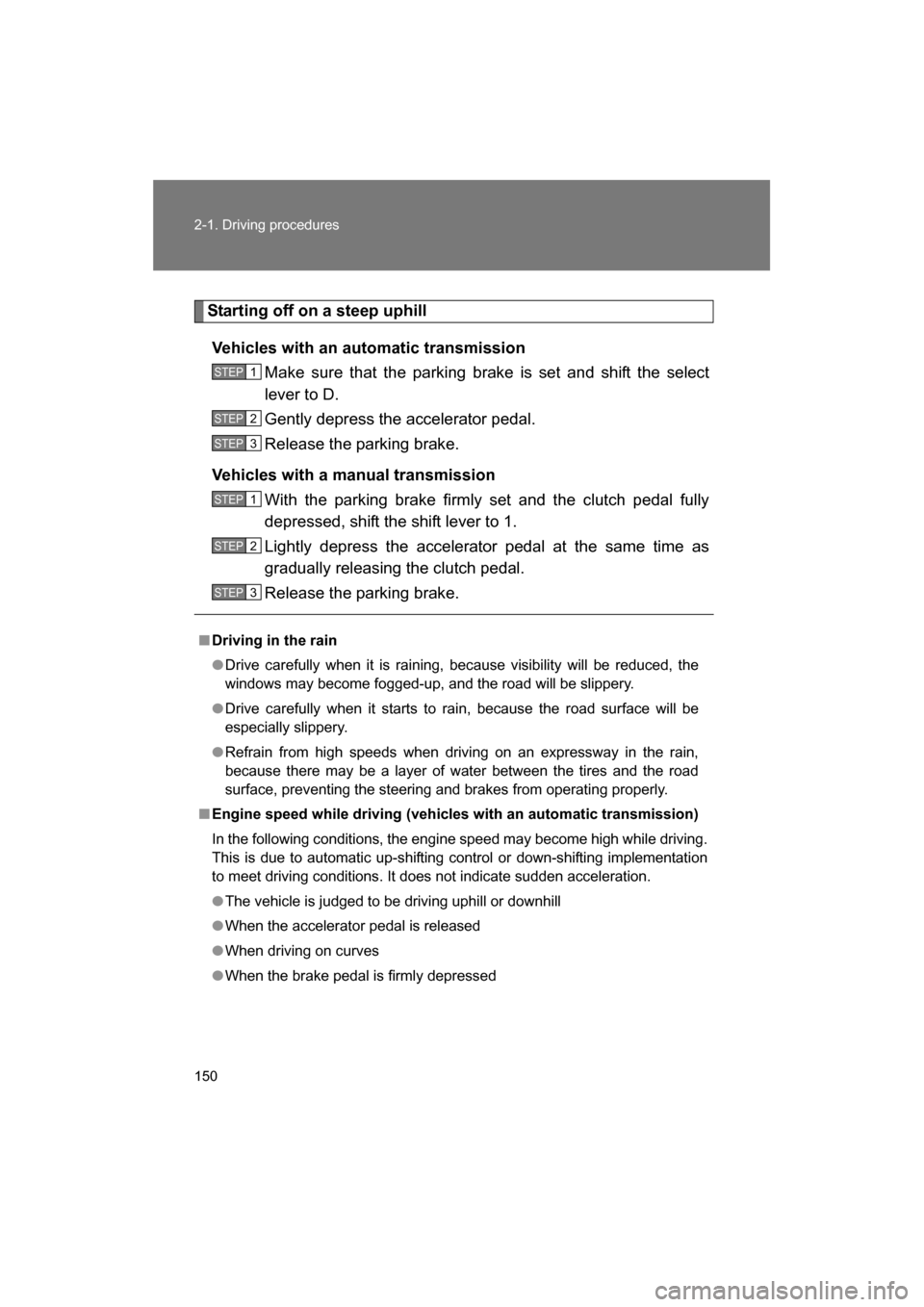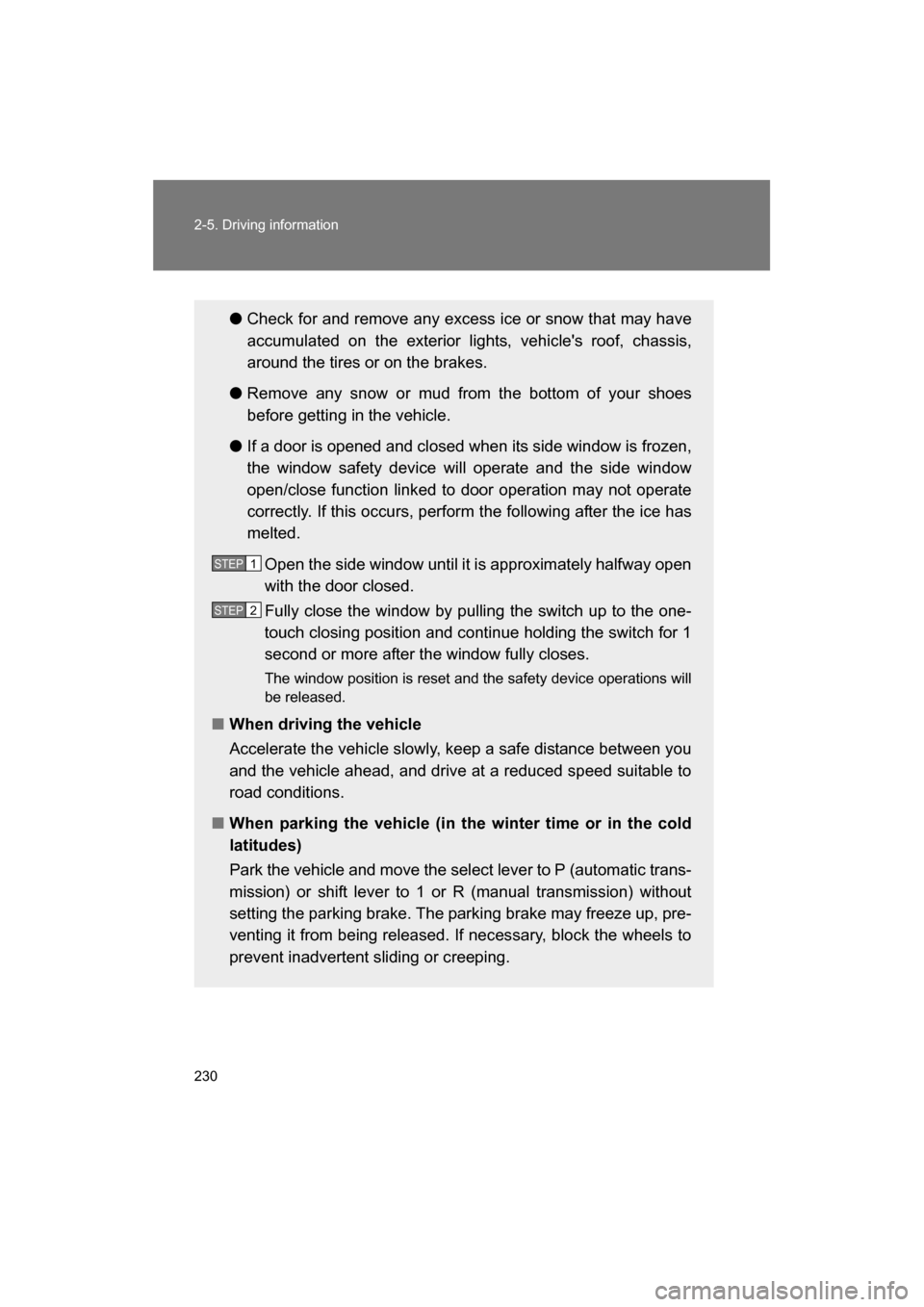Page 88 of 488
88
1-7. Safety information
SRS airbag (Supplemental Restraint System airbag)
The SRS airbags inflate when the vehicle is subjected to certain
types of severe impacts that may cause significant injury to the
occupants. They work together with the seatbelts to help reduce the
risk of death or serious injury.
SRS: This stands for supplemental restraint system. This name is
used because the airbag system supplements the vehicle’s seat-
belts.
Models with SRS airbags and shoulder restraints for driver,
front passenger, and window-side rear passengers
Your vehicle is equipped with a supplemental restraint system in
addition to a shoulder belt at each front seating position and each
rear window-side seating positions. The supplemental restraint
system (SRS) consists of six airbags. The configurations are as
follows.
Page 89 of 488
89
1-7. Safety information
1
Before driving
■When you sell your vehicle
When you sell your vehicle, we urge you to explain to the buyer that it is
equipped with SRS airbags by alerting the buyer to the applicable section in
this Owner’s Manual. Driver’s and front passenger’s frontal airbags
Driver’s and front passenger’s side airbags
Curtain airbags (for driver, front passenger, and window-side
rear passengers)
These SRS airbags are designed only as a supplement to the pri-
mary protection provided by the seatbelt.
The system also controls front seatbelt pretensioners. For opera-
tion instructions and precautions concerning the seatbelt preten-
sioner, refer to “Seatbelt pretensioners”. ( →P. 5 9 )
Page 110 of 488
110
1-7. Safety information
SRS side airbag and SRS curtain airbagThe SRS side airbag is stored in the door side of each front seat
seatback, which bears an “SRS AIRBAG” label.
In a moderate to severe side impact collision, the SRS side airbag on
the impacted side of the vehicle deploys between the occupant and
the door panel and supplements the seatbelt by reducing the impact
on the occupant’s chest and waist. The SRS side airbag operates
only for front seat occupants.
The SRS curtain airbag on each side of the cabin is stored in the roof
side (between the front pillar and a point over the rear seat). An “SRS
AIRBAG” mark is located at the top of each center pillar.
In a moderate to severe side impact collision, the SRS curtain airbag
on the impacted side of the vehicle deploys between the occupant
and the side window and supplements the seatbelt by reducing the
impact on the occupant’s head.
Page 120 of 488

120
1-7. Safety information
WARNING
■SRS airbag precautions
●Do not touch any of the component parts immediately after the SRS air-
bags have deployed (inflated) as they may be hot.
●If breathing becomes difficult after the SRS airbag has deployed, open a
door or window to allow fresh air in, or leave the vehicle if it is safe to do
so. Wash off any residue as soon as possible to prevent skin irritation.
●If the areas where the SRS airbags are stored, such as the steering wheel
pad and front and rear pillar garnishes, are damaged or cracked, have
them replaced by your SUBARU dealer.
■Modification and disposal of SRS airbag system components
Do not dispose of your vehicle or perform any of the following modifications
without consulting your SUBARU dealer.
The SRS airbags may malfunction or deploy (inflate) accidentally, causing
death or serious injury.
●Installation, removal, disassembly and repair of the SRS airbags.
●Repairs, modifications, removal or replacement of the steering wheel,
instrument panel, dashboard, seats or seat upholstery, front, side and rear
pillars or roof side rails.
●Repairs or modifications of the front fender, front bumper, or side of the
occupant compartment.
●Installation of a grille guard (bull bars, kangaroo bar, etc.), snow plows,
winches.
●Modifications to the vehicle's suspension system.
●Installation of electronic devices su ch as mobile two-way radios and CD
players.
●Modifications to your vehicle for a person with a physical disability.
Page 150 of 488

150
2-1. Driving procedures
Starting off on a steep uphillVehicles with an automatic transmission Make sure that the parking brake is set and shift the select
lever to D.
Gently depress the accelerator pedal.
Release the parking brake.
Vehicles with a manual transmission With the parking brake firmly set and the clutch pedal fully
depressed, shift the shift lever to 1.
Lightly depress the accelerator pedal at the same time as
gradually releasing the clutch pedal.
Release the parking brake.
■Driving in the rain
●Drive carefully when it is raining, because visibility will be reduced, the
windows may become fogged-up, and the road will be slippery.
●Drive carefully when it starts to rain, because the road surface will be
especially slippery.
●Refrain from high speeds when driving on an expressway in the rain,
because there may be a layer of water between the tires and the road
surface, preventing the steering and brakes from operating properly.
■Engine speed while driving (vehicl es with an automatic transmission)
In the following conditions, the engine speed may become high while driving.
This is due to automatic up-shifting c ontrol or down-shifting implementation
to meet driving conditions. It does not indicate sudden acceleration.
●The vehicle is judged to be driving uphill or downhill
●When the accelerator pedal is released
●When driving on curves
●When the brake pedal is firmly depressed
STEP 1
STEP 2
STEP 3
STEP 1
STEP 2
STEP 3
Page 230 of 488

230
2-5. Driving information
●Check for and remove any excess ice or snow that may have
accumulated on the exterior lights, vehicle's roof, chassis,
around the tires or on the brakes.
● Remove any snow or mud from the bottom of your shoes
before getting in the vehicle.
● If a door is opened and closed when its side window is frozen,
the window safety device will operate and the side window
open/close function linked to door operation may not operate
correctly. If this occurs, perform the following after the ice has
melted.
Open the side window until it is approximately halfway open
with the door closed.
Fully close the window by pulling the switch up to the one-
touch closing position and continue holding the switch for 1
second or more after the window fully closes.
The window position is reset and the safety device operations will
be released.
■When driving the vehicle
Accelerate the vehicle slowly, keep a safe distance between you
and the vehicle ahead, and drive at a reduced speed suitable to
road conditions.
■When parking the vehicle (in the winter time or in the cold
latitudes)
Park the vehicle and move the select lever to P (automatic trans-
mission) or shift lever to 1 or R (manual transmission) without
setting the parking brake. The parking brake may freeze up, pre-
venting it from being released. If necessary, block the wheels to
prevent inadvertent sliding or creeping.
STEP 1
STEP 2
Page 235 of 488
Interior features3
235
3-1. Using the air conditioning system and defogger
Manual air conditioning system ........................... 236
Automatic air conditioning system ........................... 243
Rear window and outside rear view
mirror defoggers ............ 252
3-2. Using the audio system Using the AUX/USB port................................. 254
3-3. Using the interior lights Interior lights list ............... 255
Page 237 of 488
237
3-1. Using the air conditioning system and defogger
3
Interior features
Defogging the windshieldSet the air outlet selection dial to position.
The air intake is automatically
switched to outside air mode. It is
not possible to return to recircu-
lated air mode when the switch ison.
Perform the following operations accordingly: ● To adjust the fan speed, turn the fan speed control dial.
● To adjust the temperature setting, turn the temperature con-
trol dial.
● If the dehumidification function is not operating, press
to operate the dehumidification function.
To defog the windshield and the side windows early, turn the
air flow and temperature up.
STEP 1
STEP 2